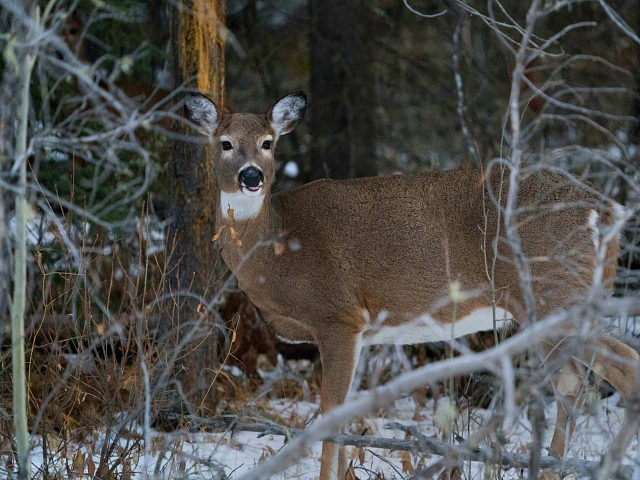A disease that causes severe weight loss, lack of balance, disorientation, and eventually death to deer that contract it has, so far, not been transmitted to humans who handle or consume the meat.
But that has not stopped speculation and fear about whether people could become infected with Chronic Wasting Disease (CWD), dubbed “zombie deer disease” because of infected animals’ blank stares and decimated bodies.
The state of Colorado has been the epicenter of the disease, but CWD has been detected in almost two dozen states. And some experts are weighing in on the possibility of the disease passing from animals to humans.
Colorado Public Radio (CPR) reported:
First observed among captive mule deer in Fort Collins in 1967, CWD has since infected wild herds in 22 states and two Canadian provinces. It has also been found in South Korea and Norway. In that time, there’s been no report of human illness due to CWD exposure, but a recent Canadian study has renewed concerns the disease could make the jump.
Colorado Parks and Wildlife asks hunters to test kills from certain areas affected by CWD. If an animal comes back positive, they recommend hunters avoid any risk by tossing out the meat before it’s eaten.
CPR reported, although no transmission from animal to humans has occurred, it is not certain that it won’t happen. It cited in its report how diseases can evolve.
“For instance, Mad Cow emerged in the UK in the mid-1980s after cattle ate bone meal of sheep infected with scrapie, a similar brain-wasting disease,” CPR reported. “The disease then made the jump to people through infected beef products, causing a new variant of Creutzfeldt-Jakob Disease.”
And in Canada, a study revealed macaque monkeys got CWD after eating infected deer meat, the first time it has been shown to pass from a deer to a primate, CPR reported.
A researcher at Colorado State University who studies the kind of protein malfunction that can lead to cross-species transmission said CWD has only been identified for half a century.
“Which leads us to believe it’s only a matter of time before a prion emerges that can spread to humans,” researcher Mark Zabel said in the CPR report.
The Centers for Disease Control and Prevention (CDC) offers advice for deer hunters on its website:
To be as safe as possible and decrease their potential risk of exposure to CWD, hunters should take the following steps when hunting in areas with CWD:
- Do not shoot, handle or eat meat from deer and elk that look sick or are acting strangely or are found dead (road-kill).
- When field-dressing a deer:
- Wear latex or rubber gloves when dressing the animal or handling the meat.
- Minimize how much you handle the organs of the animal, particularly the brain or spinal cord tissues.
- Do not use household knives or other kitchen utensils for field dressing.
- Check state wildlife and public health guidance to see whether testing of animals is recommended or required. Recommendations vary by state, but information about testing is available from many state wildlife agencies.
- Strongly consider having the deer or elk tested for CWD before you eat the meat.
- If you have your deer or elk commercially processed, consider asking that your animal be processed individually to avoid mixing meat from multiple animals.
- If your animal tests positive for CWD, do not eat meat from that animal.

COMMENTS
Please let us know if you're having issues with commenting.